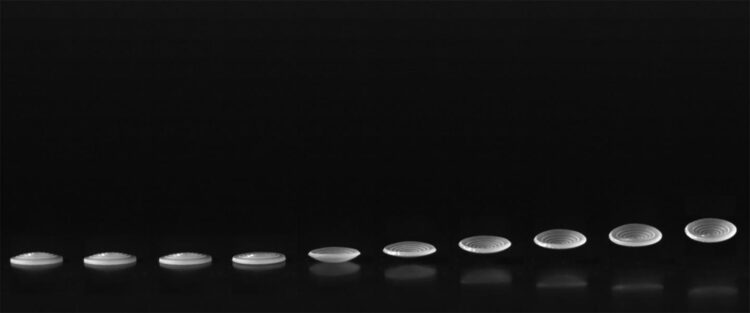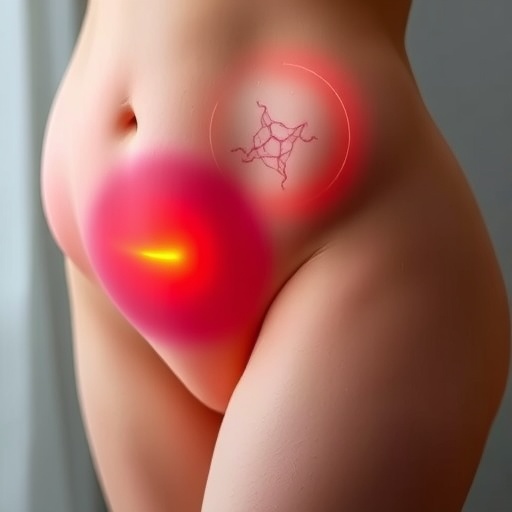Research highlights how shape and environment can cause materials to move without motors or hands

Credit: UMass Amherst
Imagine a rubber band that was capable of snapping itself many times over, or a small robot that could jump up a set of stairs propelled by nothing more than its own energy. Researchers at the University of Massachusetts Amherst have discovered how to make materials that snap and reset themselves, only relying upon energy flow from their environment. The discovery may prove useful for various industries that want to source movement sustainably, from toys to robotics, and is expected to further inform our understanding of how the natural world fuels some types of movement.
Al Crosby, a professor of polymer science and engineering in the College of Natural Sciences at UMass Amherst, and Yongjin Kim, a graduate student in Crosby’s group, along with visiting student researcher Jay Van den Berg from Delft University of Technology in the Netherlands, uncovered the physics during a mundane experiment that involved watching a gel strip dry. The researchers observed that when the long, elastic gel strip lost internal liquid due to evaporation, the strip moved. Most movements were slow, but every so often, they sped up. These faster movements were snap instabilities that continued to occur as the liquid evaporated further. Additional studies revealed that the shape of the material mattered and that the strips could reset themselves to continue their movements.
“Many plants and animals, especially small ones, use special parts that act like springs and latches to help them move really fast, much faster than animals with muscles alone,” says Crosby, when explaining the study. “Plants like the Venus flytraps are good examples of this kind of movement, as are grasshoppers and trap-jaw ants in the animal world. Snap instabilities are one way that nature combines a spring and a latch and are increasingly used to create fast movements in small robots and other devices, as well as toys like rubber poppers. However, most of these snapping devices need a motor or a human hand to keep moving. With this discovery, there could be various applications that won’t require batteries or motors to fuel movement.”
Kim explains that after learning the essential physics from the drying strips, the team experimented with different shapes to find the ones most likely to react in expected ways and that would move repeatedly without any motors or hands resetting them. The team even showed that the reshaped strips could do work, such as climb a set of stairs on their own.
Crosby continues, “These lessons demonstrate how materials can generate powerful movement by harnessing interactions with their environment, such as through evaporation, and they are important for designing new robots, especially at small sizes where it’s difficult to have motors, batteries, or other energy sources.”
These latest results from Crosby and his group are part of a larger multidisciplinary university research initiative funded by the Army Research Office, an element of the U.S. Army Combat Capabilities Development Command’s Army Research Laboratory and led by Sheila Patek, professor of biology at Duke University, that aims to uncover many similar mechanisms from fast-moving biological organisms and translate them into new engineered devices.
“This work is part of a larger multidisciplinary effort that seeks to understand biological and engineered impulsive systems that will lay the foundations for scalable methods for generating forces for mechanical action and energy storing structures and materials,” says Ralph Anthenien, branch chief, Army Research Office, an element of the U.S. Army Combat Capabilities Development Command’s Army Research Laboratory. “The work will have myriad possible future applications in actuation and motive systems for the Army and DoD.”
###
The researchers published their findings in the January 2021 issue of Nature Materials, a peer-reviewed scientific journal.
Media Contact
Patty Shillington
[email protected]
Original Source
https:/
Related Journal Article
http://dx.





